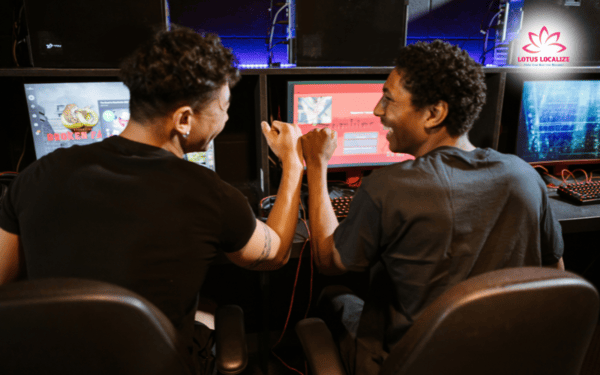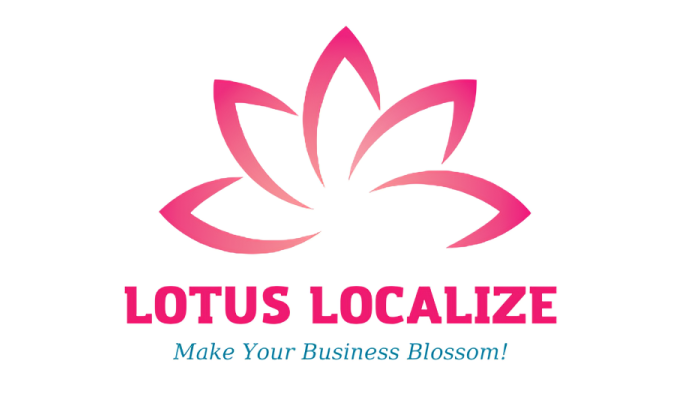
Localization vs translation in game – Why the difference matters more than you think
In today’s booming gaming industry, the global market has become more interconnected than ever. With millions of players across continents diving into the same titles, language and cultural differences pose both opportunities and challenges for game developers. This brings us to a crucial topic in international game publishing: localization vs translation in game. Though these terms are often used interchangeably, they serve distinct roles that can significantly impact the overall game user experience.
In this article, we’ll unpack the real difference between game localization and translation, explore the common challenges of adapting games for global audiences, and highlight why choosing the right localization partner—like Lotus Localize—can make or break your international success.
Localization vs translation in games: What’s the real difference?
Let’s start by making a clear distinction. Translation in games refers to the direct conversion of text from one language into another. This includes dialogue, UI text, menu options, item descriptions, and more. It ensures that the core meaning is preserved across languages.
However, localization goes several steps further. It involves adapting a game to fit the cultural, linguistic, and contextual expectations of a specific region. This doesn’t just mean translating words—it means modifying graphics, colors, character names, humor, slang, and even game mechanics to resonate with players in a particular country or region.

Here’s how translation and localization differ across key aspects:
- Focus: Translation focuses solely on converting language, while localization service includes language plus culture, regional preferences, and legal requirements.
- Scope: Translation deals primarily with text. Localization covers a broader range—text, visuals, audio, voice-overs, marketing materials, and gameplay elements.
- Audience engagement: A translated game may be technically understandable, but it can still feel foreign or emotionally distant. Localized games feel natural, immersive, and emotionally relevant.
- Effort required: Translation generally involves less effort and cost. Localization is more complex and requires the collaboration of native linguists, cultural consultants, and often the original developers.
- Outcome: Translation results in a functional version of the game. Localization delivers a fully tailored experience that can significantly improve player satisfaction and retention.
The takeaway? If your goal is simply to be understood, translation might suffice. But if you want your players to feel like the game was made for them, localization is non-negotiable.
Read more: 6 powerful benefits of localization to supercharge your business growth
Common challenges and solutions in localizing games
Game localization is not without its challenges. Developers and localization teams must work together to navigate complex linguistic, technical, and creative hurdles. Let’s examine a few common issues—and how to overcome them.
Text expansion and UI constraints
When translating from languages like English into German or Russian, the text often expands by 20–40%. This can wreak havoc on the game’s UI design, especially in mobile or console games with limited screen space.
Solution: Localize with UI constraints in mind from the start. Consider using adaptable layout frameworks and allow space for flexible text lengths.
Maintaining tone, humor, and intent
Humor and tone are among the hardest elements to localize. A sarcastic line or cultural pun might fall flat or even confuse players from another culture.
Solution: Use native linguists and editors who understand both the language and cultural nuance. Allow creative freedom where literal translation doesn’t work. Sometimes, transcreation—rewriting content for a local audience—is more effective than direct translation.

Syncing audio and visual elements
When games have voice acting or cutscenes, syncing the localized audio with character lip movements or timing can be a major task.
Solution: Consider subtitle vs dubbing strategies early. If dubbing is planned, invest in professional voice actors and adapt scripts accordingly. Local voice talents can also enhance immersion and emotional connection.
Technical integration and testing
Introducing new language packs and localized assets can sometimes break the game or lead to bugs, especially in complex open-world or narrative-heavy games.
Solution: Conduct rigorous localization testing before launch. This includes linguistic testing (checking accuracy) and functional testing (ensuring nothing breaks). Using a QA team with gaming and localization experience is crucial.
Handling user-generated content (UGC)
In multiplayer games or MMOs, players often create their own content, names, or chat messages. These can pose issues for moderation, translation, and appropriateness.
Solution: Implement content filters and community guidelines tailored to each region. Use AI-assisted moderation where possible, but always have human oversight for sensitive markets.
Read more: E-commerce localization: Key strategies for global market penetration
The future of game localization and translation
The gaming world isn’t standing still—and neither is localization. Here are some trends shaping the future:
AI-assisted localization
Machine translation and AI tools are improving rapidly. They can accelerate the first draft of a translation, especially for large games with massive text volumes. However, human review remains essential to preserve nuance and creativity.
Real-time translation
For live-streamed games and multiplayer interactions, real-time translation is becoming more viable. This will open up new forms of multilingual game development where players from different regions can seamlessly interact.

Player-driven content and global communities
With the rise of user-generated content, players contribute to world-building and storytelling. Localizing these elements adds a layer of complexity, but it also offers new ways to engage diverse audiences.
Inclusive localization
There’s growing awareness around making games inclusive—not just linguistically, but socially. That includes avoiding stereotypes, representing diverse cultures respectfully, and ensuring accessibility for all players.
Why choose Lotus Localize for your game localization needs
At Dich Thuat Hoa Sen, we bring a winning combination of expertise, precision, and speed to every game localization project:
- Expertise in game localization: Our team understands the mechanics, narrative flow, and emotional impact that define a great gaming experience—and we preserve all of it in every language.
- Unmatched accuracy: Native linguists with deep cultural insight ensure that every word or reference feels natural to local players, while maintaining consistency and intent.

- Speed and reliability: We deliver high-quality work within tight deadlines, supported by robust workflows and experienced project managers who understand the pace of the gaming industry.
- Multilingual scalability: We support a diverse range of language pairs to meet your global localization needs, ensuring consistency and quality across all markets.
Partner with Dich Thuat Hoa Sen to create immersive, culturally-resonant gaming experiences for players worldwide.
So, what’s the bottom line in the localization vs translation in games debate?
While translation is a component of the localization process, it’s just the tip of the iceberg. True localization dives deeper—adapting content for cultural relevance, emotional resonance, and market expectations. In a fiercely competitive global industry, it’s not enough to simply translate your game. You need to localize it—and do it well.
By investing in high-quality localization and working with trusted partners like Dich Thuat Hoa Sen, you’re not just speaking the language of your players—you’re speaking their culture. And that, more than anything, is the key to winning hearts (and markets) worldwide.
If you have any questions or need assistance with localization services: app localization, website localization, software localization,…, please contact Lotus Localize immediately at + 84 866 224 968 or visit the website: lotus-localize.com or dichthuathoasen.com/en/ for advice on the best solutions!
QUALITY PROMISE
At Lotus Localize, we are dedicated to delivering high-quality services and ensuring the utmost satisfaction in every client project. Our team of translators and staff consistently exert effort and adhere rigorously to quality management procedures. This commitment guarantees that each project progresses seamlessly, meets deadlines, and exceeds our clients' expectations.












